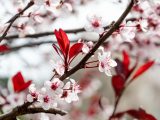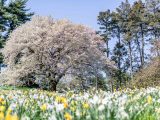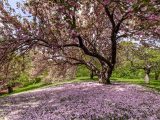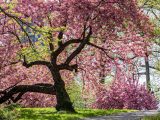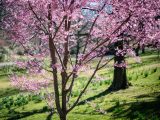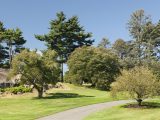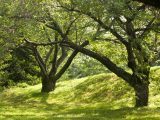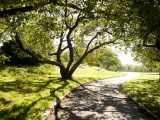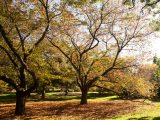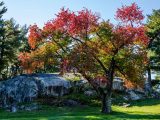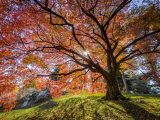
Cherries
March–May
The flowering cherry collection at the New York Botanical Garden features over 500 cherry trees scattered across the entire 250 acres, with bloom times ranging from March to mid May. Because of the diversity of our flowering cherry collection, there are distinct periods of peak bloom each spring.
You can use Plant Tracker to explore flowering cherries and other plants in the genus Prunus to find individual trees that you are interested in visiting.
Real-time bloom tracking
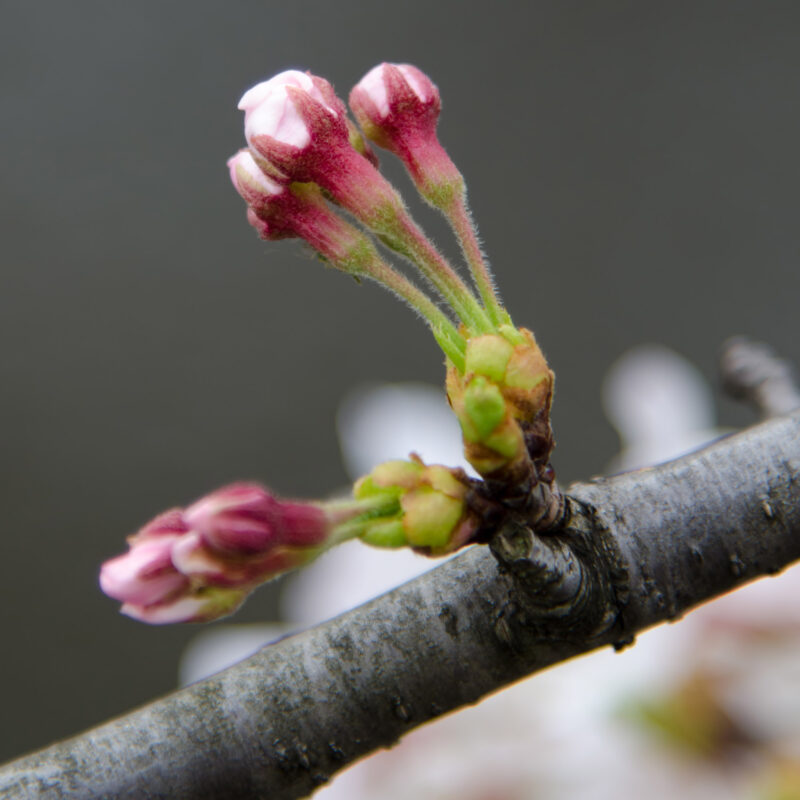
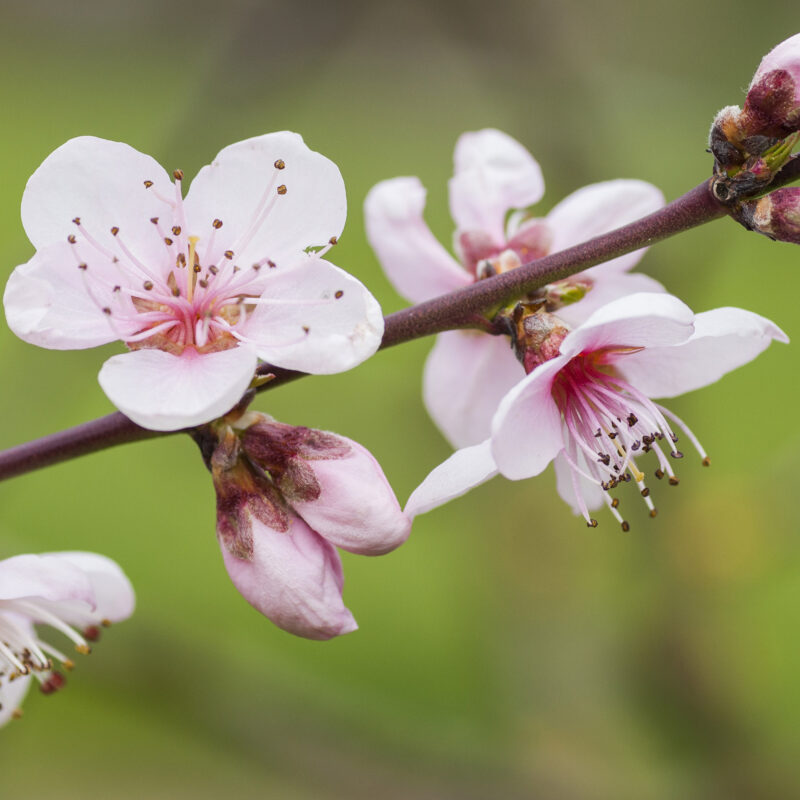
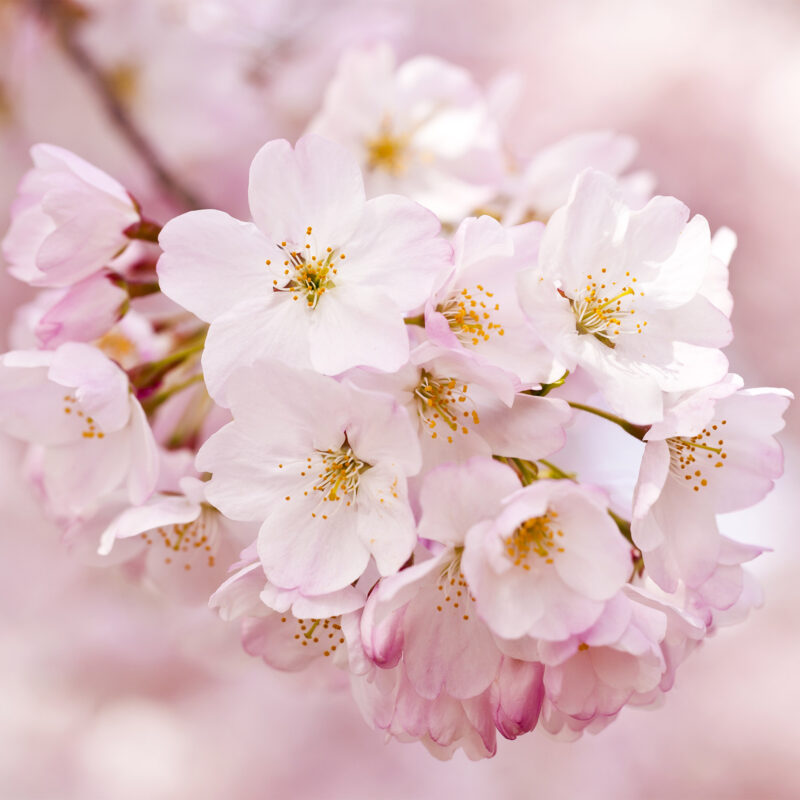
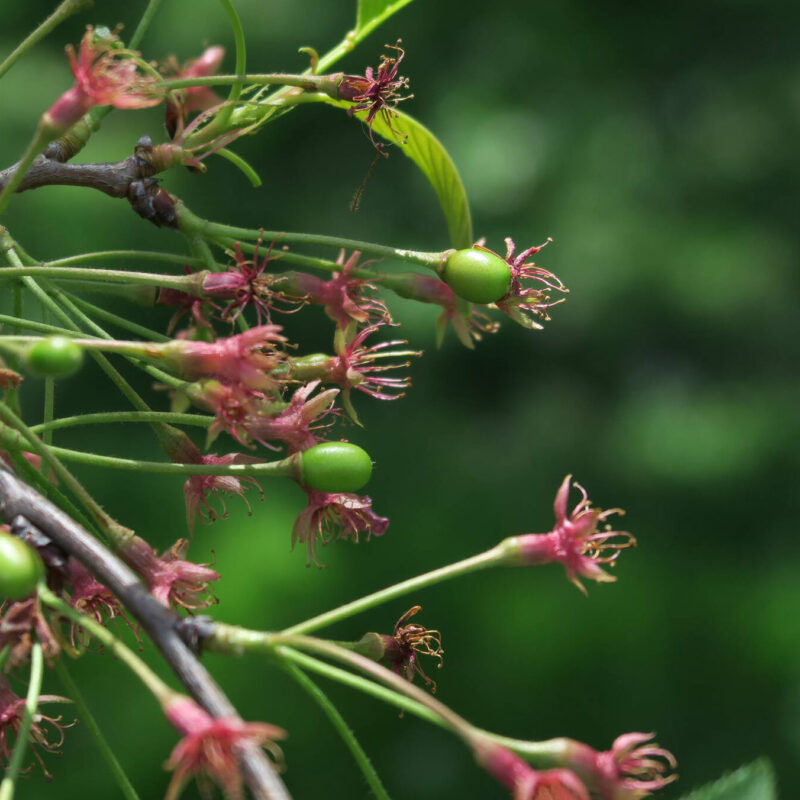
Additional Information
Early Season Cherries
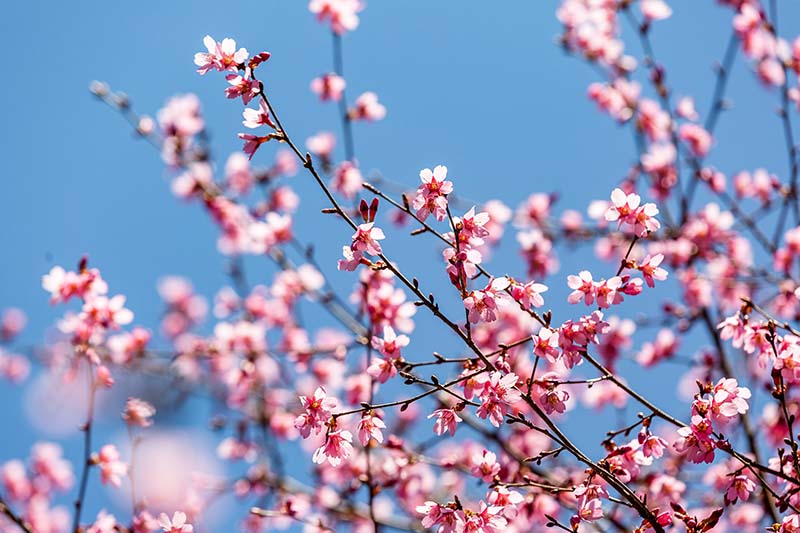
The early season flowering cherries bloom in late March. A highlight of this period is the Okame cherry (Prunus × incam ‘Okame’), which has a proliferation of dark fuchsia flowers. During the early season you can also find Japanese apricots (Prunus mume) in bloom, which are close relatives of flowering cherries.
Mid Season Cherries
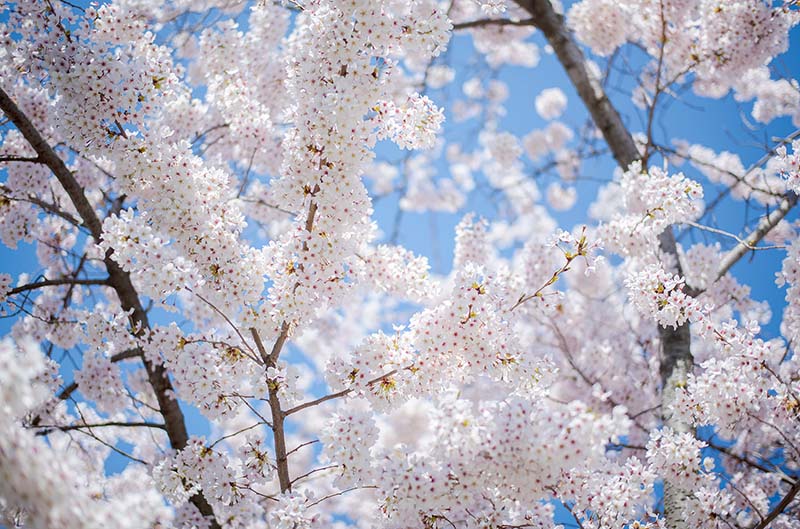
The mid-season flowering cherries occur throughout the month of April. This is a large and diverse group that includes Yoshino cherry (Prunus × yedoensis) like those at the Tidal Basin in Washinton DC, the iconic double weeping cherry (Prunus pendula ‘Yae-beni-shidare’), and the natural hybrid Higan cherry (Prunus × subhirtella).
Late Season Cherries
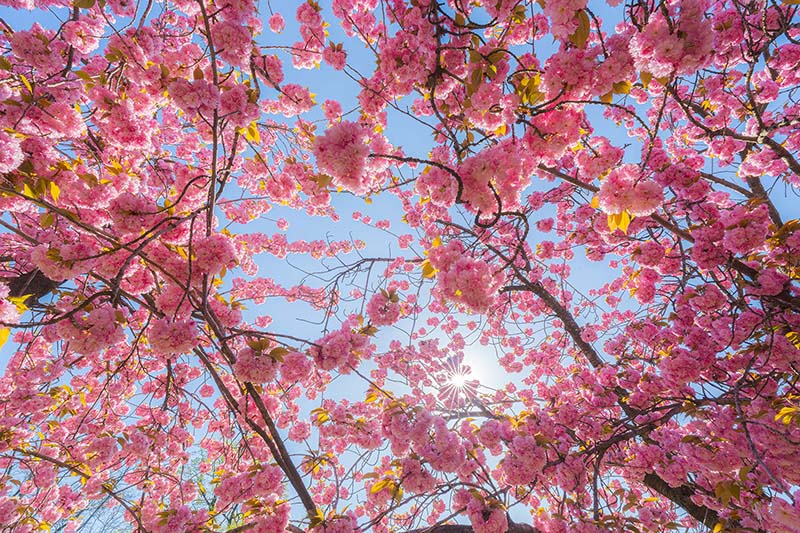
The late season cherries bloom from late April to mid-May. The most well-known cherry of this group is the ever-popular Kanzan cherry (Prunus ‘Kanzan’). Also in bloom in the late season are the unusual, green-flowered Ukon cherry (Prunus (Sato-zakura Group) ‘Ukon’), and the beautiful Fugenzo cherry (Prunus (Sato-zakura Group) ‘Fugenzo’), which was introduced into cultivation in Japan as early as the 14th century.
Bloom Calendar
Bloom status graph by date
Bloom status graph legend
- Early Season Cherries
- Mid Season Cherries
- Late Season Cherries
Dig Deeper
The Collection
Among this inspiring collection we have 543 individual flowering cherry trees which represent 82 different species, hybrids, and cultivated varieties.
- Early bloom: Okame cherries (Prunus × incam ‘Okame’) bloom throughout the month of March
- Mid-season bloom: Yoshino cherries (Prunus × yedoensis) bloom throughout the month of April
- Late-season bloom: Kanzan cherries (Prunus ‘Kanzan’) bloom from late April to mid-May
The Locations
Today, there are three main spaces to view the cherries among our living collections:
- Cherry Valley
- Ross Conifer Arboretum
- Along NYBG’s southern perimeter
Cherries are also planted as accent and ornamental trees along our paths and roadways and in other highly visible areas throughout the Garden’s 250 acres.
The Facts
Cherries have always been an important component of NYBG’s living collections. A range of botanical taxa were part of the original phylogenetic sequence within the Deciduous Arboretum, and ornamental specimens were used in displays and decorative plantings at entrances and other central areas from the very beginning of the Botanical Garden’s construction in the 1890s.
By 1910, the popularity of the flowering cherries among visitors inspired us to set aside a greater portion of the Deciduous Arboretum for a display of more than 100 Japanese flowering cherries.
The Archives
Our Steere Herbarium is home to millions of plant specimens that tell the story of our planet’s botanical biodiversity across centuries of time, which informs our efforts to save the plants of our world for future generations.
Peruse the herbarium specimens and stories that live here at NYBG.

